Chris Gibbany
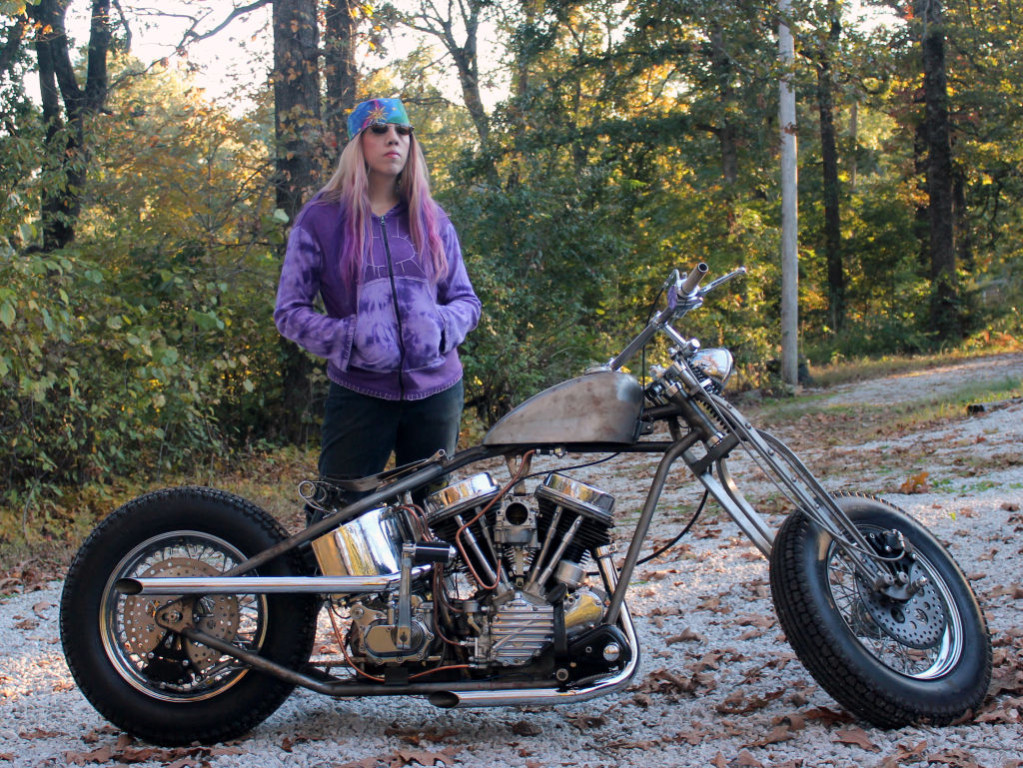
Women Who Ride: Chris Gibbany with her 1956 Harley Panhead in its raw form
Please introduce yourself. I am a happily married woman who is super passionate about people being free to be who they really are. I love old Harleys and hot rods. My first forty years were devoted to Camaros and Corvettes. Now I’ve delved into Mopar land with a 1974 Dodge Charger and a 1973 Dodge Challenger. Cars and bikes are my whole life!
I also raise hedgehogs and worked as a professional wedding photographer for ten years. I write for several motorcycle magazines. I design all of my bikes from start to finish and help build them.
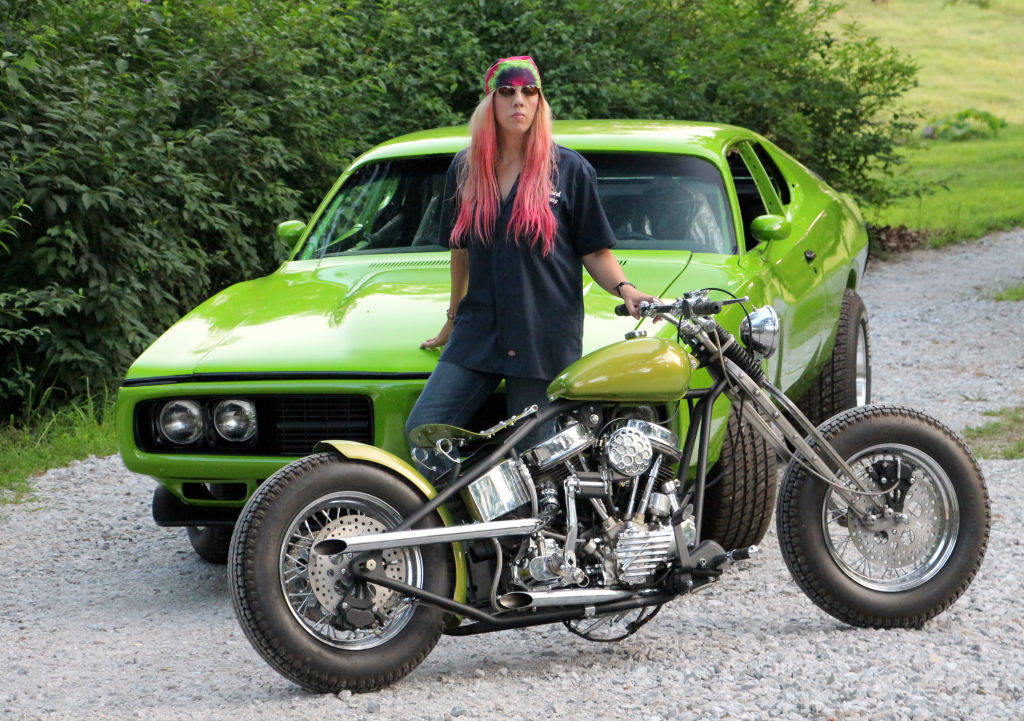
Chris Gibbany with her 1956 Harley Panhead and 1974 Dodge Charger
Describe your path into motorcycling. I have always been in love with cars and bikes. Growing up I collected Hot Wheels cars and miniature motorcycles. When I was little, my parents would offer my brother and I the choice of a candy bar or the equivalent money every day. I always chose the money while my brother chose the candy bar. I opened a savings account and put all my money into it. When I was older, I used those savings and my college scholarships to purchase my first car and motorcycle.
I learned to ride motorcycles at the age of 16, before learning to drive a car. Riding a bike back then was nothing like it is today. It wasn’t to impress anyone or to be seen. It was never even talked about. It was just something you did when you went home from school.
While in college, I bought a 1978 Camaro Z-28 which I drag raced. I did all of the sanding on it, built the motor and had it painted when I worked at a body shop. It was my baby, my first true love.
The first bike I bought with my own money was a Yamaha DT enduro. I loved that bike and it taught me a lot. I rode it everywhere. When I was married to my first husband, he made me sell it to buy him an expensive birthday gift. I got another bike a few years later and while I was at work one day, he sold it. I filed for divorce and decided that no one was ever going to get in the way of my love affair with my machines.
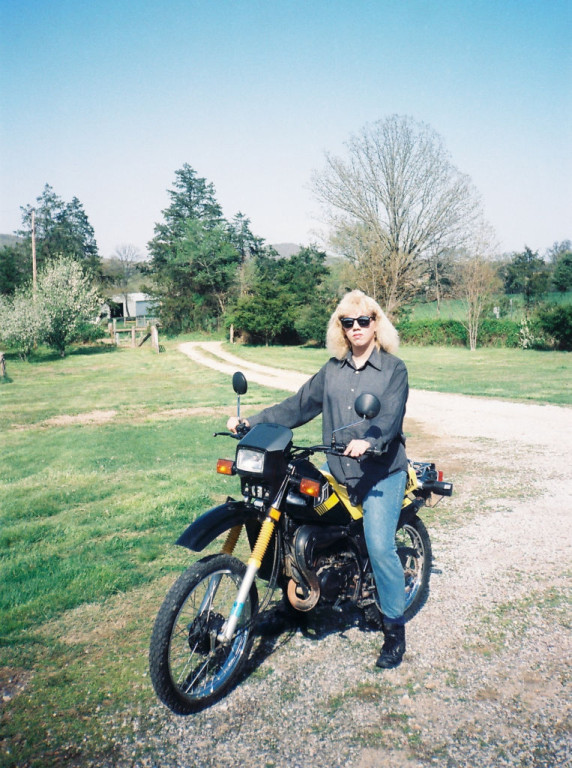
Chris Gibbany’s first bike – a Yamaha DT enduro
After I got divorced, I met my current husband who was happy to find a woman who cared about cars and motorcycles. We married six months after we met and started riding enduros. Then I moved up to a Yamaha Virago and started riding more on the street.
When I decided it was time, I bought a 1970 Harley Ironhead and rode that for a while. It was then time to start building the bikes that I saw in my head. That’s when I started with my 1981 Harley Ironhead that has now been featured in magazines all over the world. As I was building it, I bought a 1956 Harley Panhead motor and started building it in my head. After six years, it is almost done. My Harley Knucklehead is still in the design stage in my living room but will hopefully be running next year.
My passion for old bikes has almost surpassed my love for old cars. I used to own five classic cars. Now I only have two cars and three bikes.
My other major accomplishments have been writing for Wrench, Renegade and Thunder Roads of Oklahoma/Arkansas, and having my bike featured in American Iron, Wild Motorcycles, The Horse Backstreet Choppers and other national magazines.
Outside of my passion for machines, I live a very simple and frugal life. My husband and I choose to live without a television, microwave, dishwasher, clothes dryer etc. I only go to town once a month to purchase food and necessities and only spend $100 on everything. We only eat meat that we hunt and kill, so I haven’t bought meat in years. Everything that I have I got on my own by working minimum wage jobs. I have sold almost everything out of my house in order to buy more Harley and car parts.
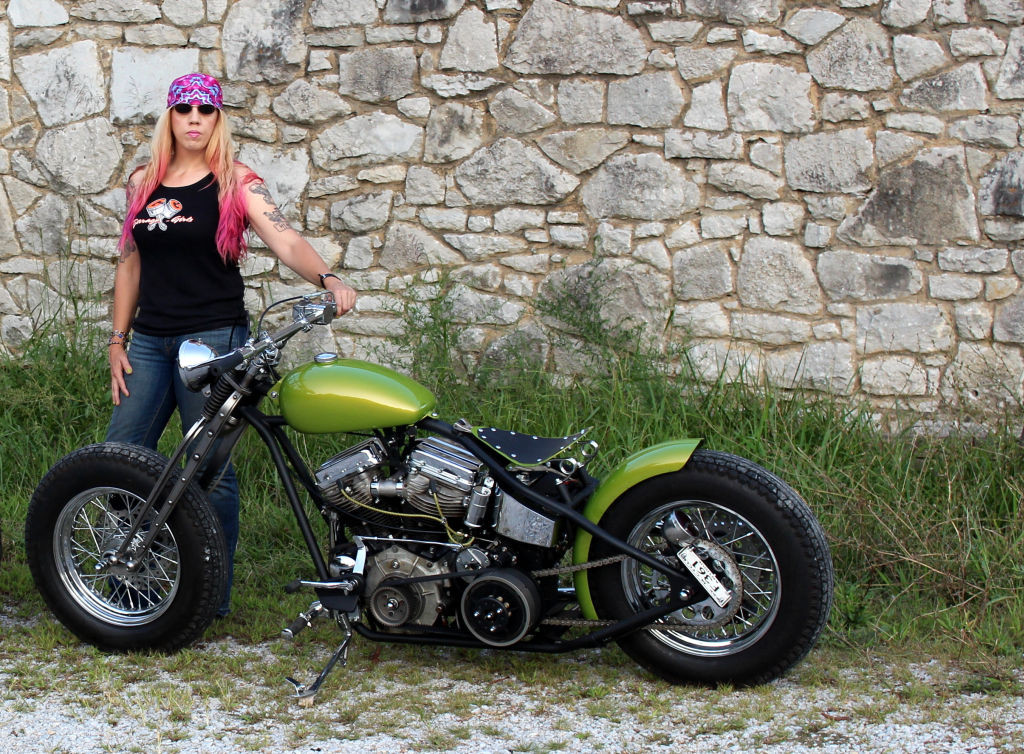
Chris Gibbany with her 1956 Harley Panhead
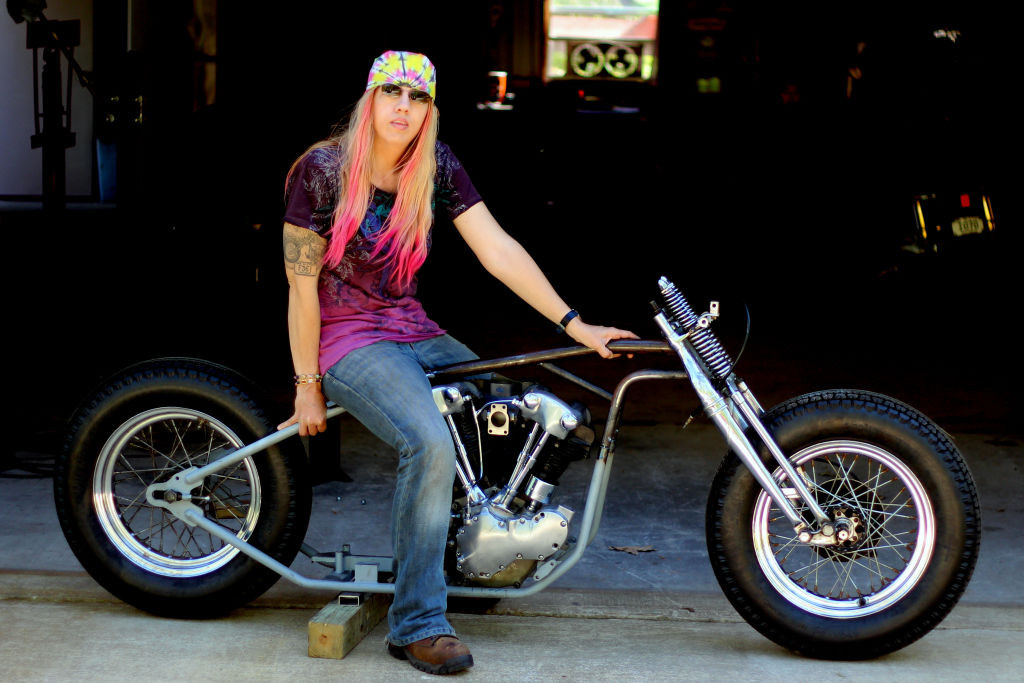
Chris Gibbany with her 1939 Harley EL Knucklehead
What are you riding these days? The bike I have been riding for over five years is my 1981 Harley Ironhead. When I bought the bike it had seen better days. We knew it was a good start so we proceeded with what I had in mind. It has an original 1981 frame that we welded a hardtail on. I built the bike around solid Fatboy wheels, put a Shovelhead wide glide on it, added in a seat that sits on scissor springs and had a buddy paint it black with flames. It is everything I had in mind! Even though Ironhead Sportsters have a bad rap, mine has been exceptionally reliable.
I love riding it and just looking at it. I don’t much care for it when the wind is blowing or when big trucks are passing by me because the solid wheels impede the wind and make it very unstable. I had people tell me that I had better be building a race bike because I wouldn’t actually want to ride a lightweight bobber with solid wheels on it. I now know what they were talking about!
[From Wikipedia: A bobber is a custom motorcycle that usually has had the front fender removed, the rear fender “bobbed” (made smaller), and all superfluous parts removed to reduce weight.]
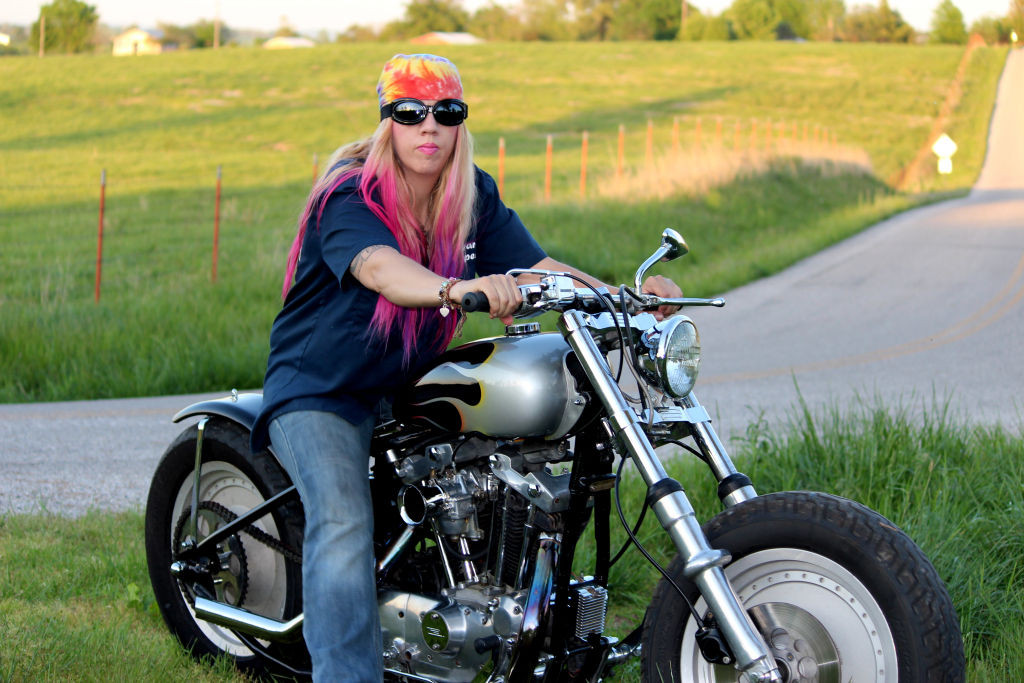
Chris Gibbany with her 1981 Harley Ironhead
What does building a bike involve? To me, the main part about building a bike is the vision you begin with and all the design changes you make until you’re done. I design the bike from start to finish. I don’t do anything on paper, I just have it in my head. I usually start with a basic idea of some key things I want in the bike and start getting the major components that comprise the build – the motor, frame, wheels, and front end. Next, the little parts start coming together – the seat, tank, fenders, air cleaners etc. Once the bike is mocked together and we see that everything is going to fit, we break the bike down, paint the frame, and send the tank and fender to a professional painter. While waiting on those to come back, we start ordering stainless hardware and other small necessities.
I try to combine things that don’t normally go together. For example, the basic concept of the Ironhead I designed was to build a very minimal looking machine with no turn signals or speedometer, Fatboy wheels and a wide glide front end.
For the Panhead, I initially started with a Chica gooseneck frame and slowly started working around it. I mixed the old original 1956 motor with a frame that is wide in the back and has larger tubing.
Each bike I design is different but it usually has some of the same components carry over from the last one. For my current bike, I am using the same Baas Metalcraft seat pan and the Coke bottle handlebar grips that I am in love with from my previous bike. With each build, I decide to change what is not “perfect” and look for better solutions to serve my needs. For the Knucklehead, I am going to adapt 7/8 bars instead of using the standard 1” bars because they are easier for my smaller hands to hold onto. Since I have had the wind problem with the solid wheels on the Ironhead, I have opted to use spokes on the current build to get a better riding experience.
As far as skills go, I do all the concept and design, and my husband and I do the physical work together (it helps that he is an ASE mechanic by trade). I rely on my painter friend Jim Crabb to paint my bikes. I have also recently started using my friend John Hayden who is a superb welder and fabricator.
My bikes can be called bobbers or choppers, depending how you define those terms but I hate to put labels on them. They are just custom builds which are rideable.
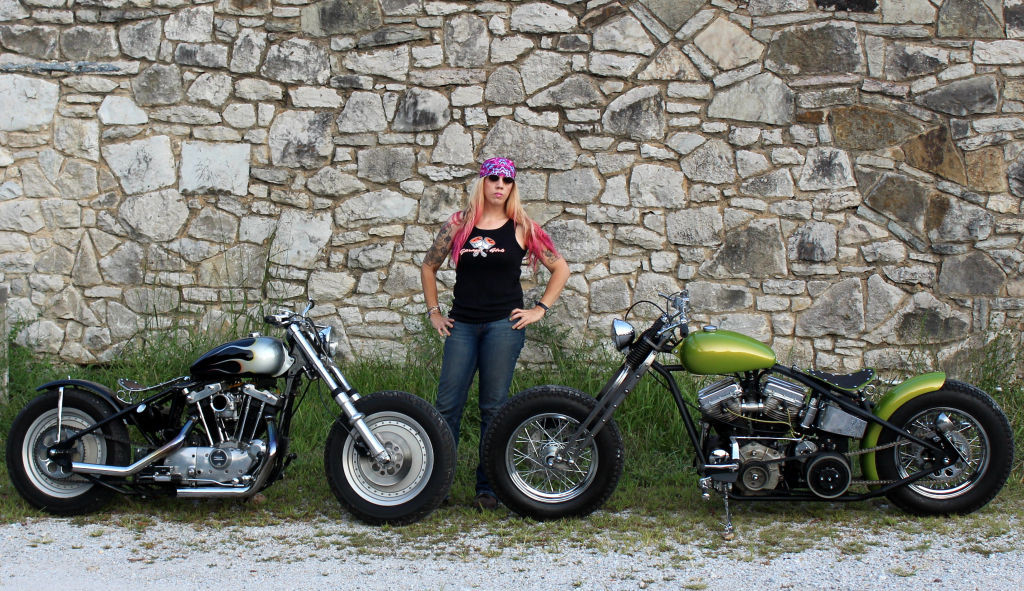
Chris Gibbany with her 1981 Harley Ironhead and 1956 Harley Panhead
What is the average cost of a build? The average cost depends mostly on the type of engine you are putting in the frame. With the Ironhead, I bought the running bike for $2900. Once we cut and bobbed, sourced and purchased parts, I had spent a total of around $5000.
In the case of the Panhead and Knucklehead, where the engines are a lot more expensive and harder to find, the price goes way up. Adding a custom frame like the Chica and a Tech Cycle electric start kit, the price came up to about $15,000.
Are there skills that you would like to learn that would take your builds to the next level? I would like to learn more about the mechanical aspects of the builds. I was learning to weld, true and lace wheels but seeing how my time is better spent on the design process, I have strayed from those areas in order to concentrate on the visual appeal. It seems to work better when one of us is doing the engineering and the other is working on the visuals.
I have also thought about getting into some basic painting and powder-coating, but with no shop and lack of funding, it is cheaper for me to just get it done.
Are there other builders out there who inspire you? Anything that Shinya Kimura does is amazing! He is the founder of Zero Engineering and now operates Chabott Engineering. I would have to say that Shinya is my main inspiration.
Is there any other kind of motorcycling that you’d like to try your hand at? I’d like to try racing my Knucklehead at the drag strip.
Do you have any motorcycling heroes? Cristine Sommer-Simmons and Brittney Olsen. They both ride vintage bikes. Brittney races while Cris has been on the Cannonball Run endurance ride. There are a lot of women who ride or participate in the motorcycle world whom I would like to meet someday. My finances prohibit that at the moment but there are so many women out there doing good things for the industry.
If you could change one thing about the world of motorcycling, what would it be? That both men and women get into the sport for the right reasons, not to attract attention to themselves.
RIDING IN ARKANSAS
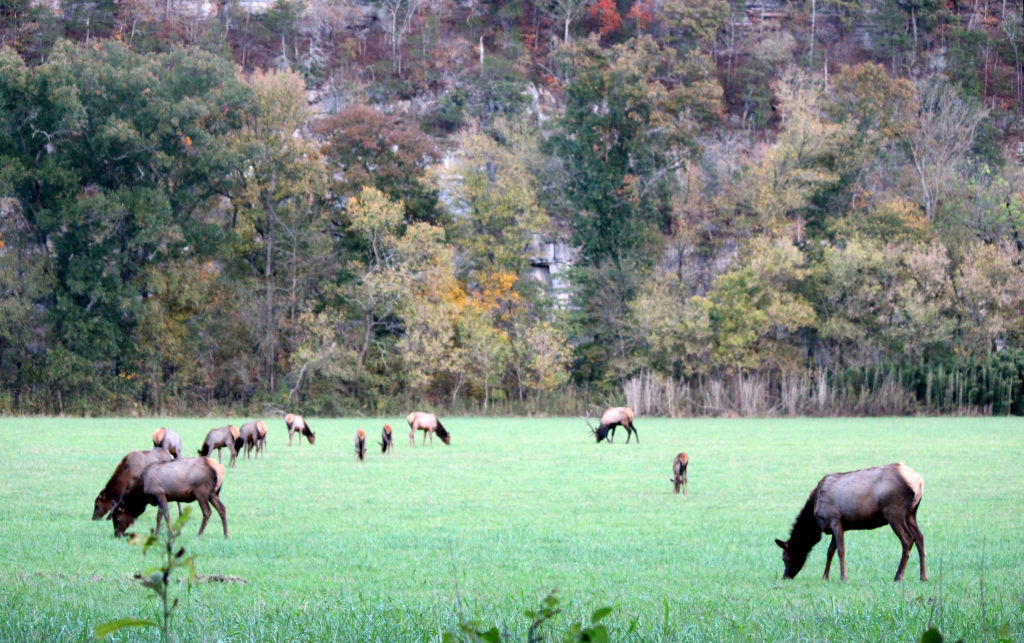
Elk in a pasture
What’s your favorite Sunday ride? A good short morning run around here is what’s known as the “Jasper Disaster”. It has that name for good reason! It is a 60 mile run with 316 curves. Mile for mile, this route is the curviest riding route in the state. The scenic beauty of this route is incredible with its wonderful overlooks, massive drops in elevation and many opportunities to see wildlife like deer, turkey, elk, and eagles.
What’s the best part about riding in Arkansas? The best part is the variety and beauty of the state. The geography of Arkansas varies widely. The state is covered by mountains, river valleys, forests, and lakes.
We have about 190 different types of trees as a large majority of the state is covered by some sort of forest. We have oaks, hawthorns, hickories, plum and cherry, maples, elms, willows, pines, magnolias and ash trees. Beautiful and colorful wild flowers grow alongside the road, as does blackberries, dewberries, plums, apples, peaches and other kinds of edible fruit. We sometimes take rides just to pick up wild fruit.
We have lots of scenic mountains, beautiful lakes and rivers if you want to stop and get wet. There are tons of places to pull over and take in the sights of deep valleys and spring flowers. You might see all kinds of wildlife native to our area- raccoons, opossums, deer, elk, rabbits, turkey and other such creatures.
The part of Arkansas I live in is known as the Ozarks. The Ozarks is a broad term for many mountainous counties in northwest Arkansas. Here you will find hundreds of twisties on any given ride. In fact, the “Pig Trail”, a 19 mile stretch on Arkansas Highway 23 was recently named the second best road to ride on in the United States. So whether you want to ride trails, straights, or get in a lot of curves with fantastic scenery, we have it all.
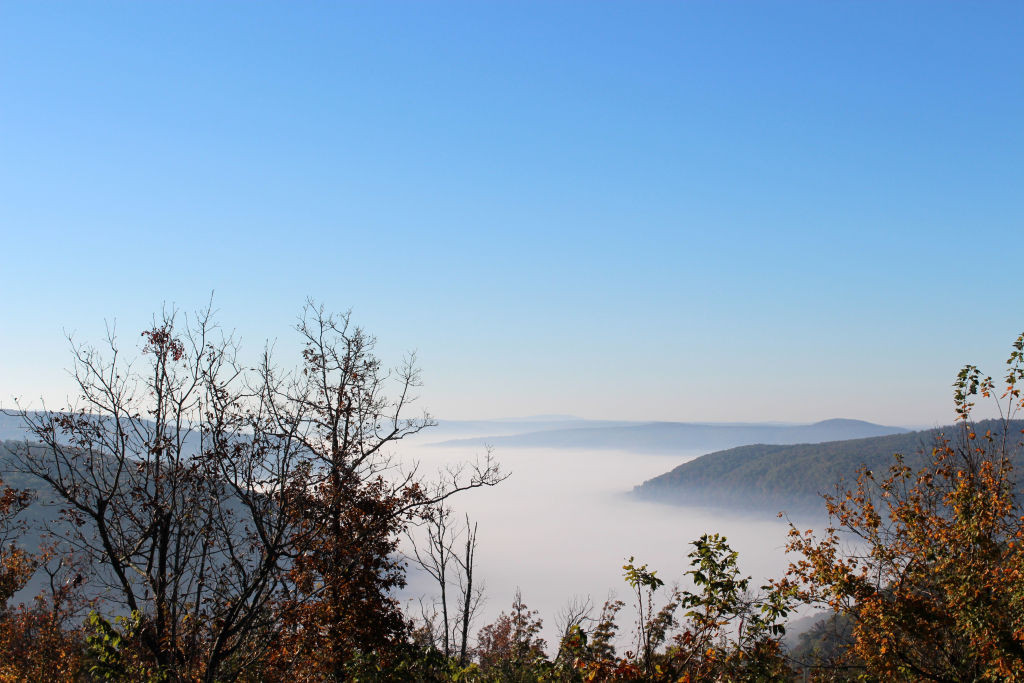
A foggy fall morning on Highway AR 16
What kind of food can riders expect to stop for on the way? We have all types of food and plenty of restaurants to choose from, but we are known for our Country Cookin’, such as fried chicken, monster fresh beef burgers and fried catfish. All that comfort food that likes to stick to your ribs as you challenge yourself to take another bite with the belt loosened up a notch or two. We have tons of homemade desserts from great pecan pies to strawberry jam on toast, home grown Arkansas peaches, and watermelon. We also happen to have the best prime rib and rib eye steaks you could possibly get, just a few miles from where I live at this great motorcycle resort called The Hub. It is the epitome of Arkansas cooking at its finest.
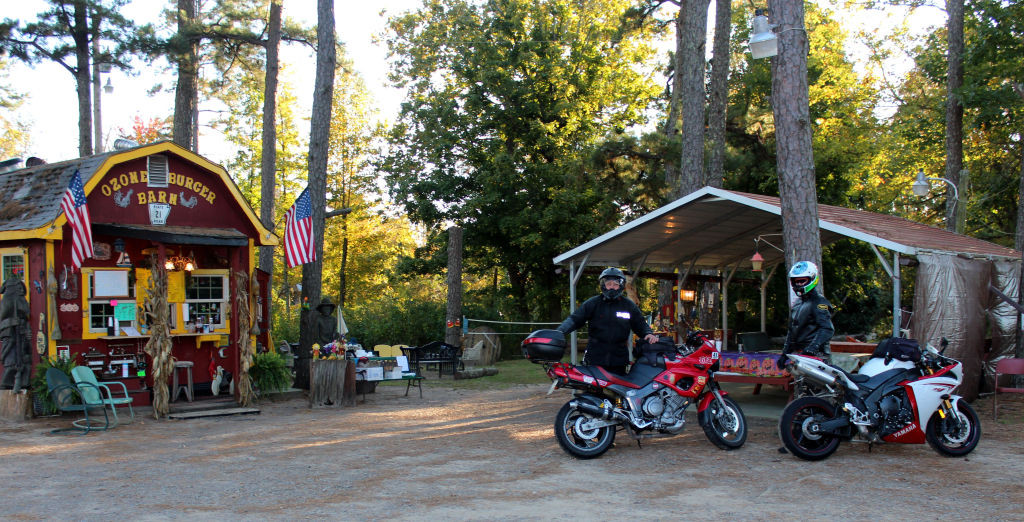
Ozone Burger Barn off of Highway 21
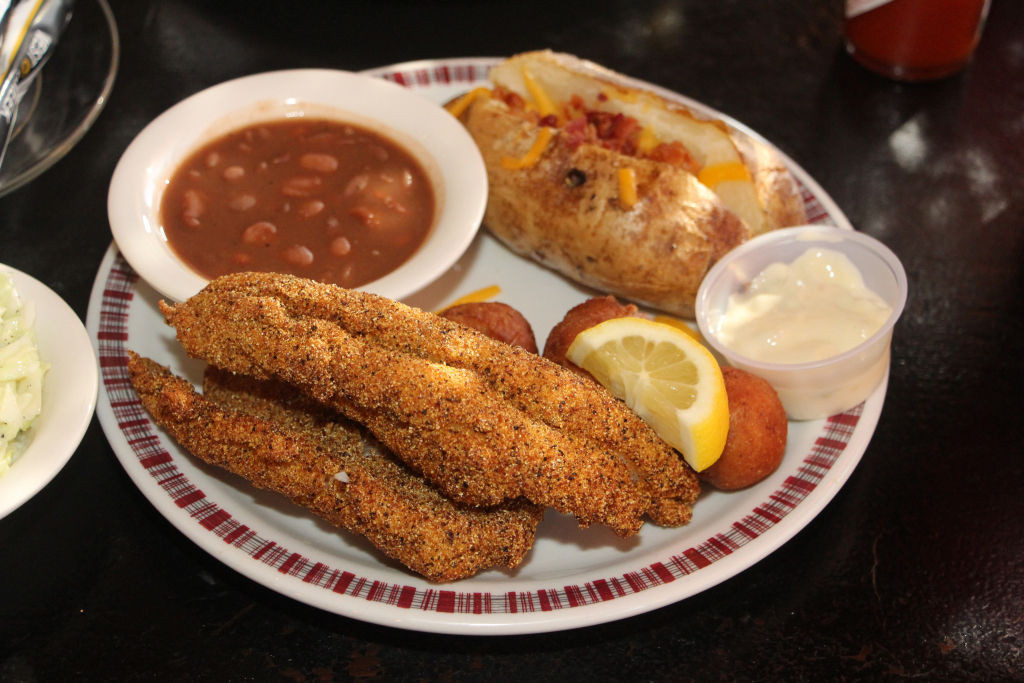
A fried catfish dinner at The Hub Scooter’s restaurant
Is it safe to ride at night where you live? I don’t ride at night as I have night blindness but I see other people ride all the time. The only thing to watch out for here in Arkansas is deer and other wildlife that move at night. There are a lot of accidents on account of people hitting deer in their cars and on their bikes.
Is motorcycle theft a problem? Not where I live. I’m sure there is a bike stolen occasionally, especially when there is a big rally over in Fayetteville like Bikes, Blues and BBQ.
Are there any motorcycle specific laws? I think since so many people of all professions ride these days it has lessened the idea of the “outlaw biker”. There are no specific motorcycle laws that I am aware of. Here in Arkansas we don’t even have a helmet law. The laws are pretty lax compared to some other states as far as riding a motorcycle and no, motorcyclists here are not discriminated against.
Do you have access to high quality women’s motorcycling gear? Yes, anything that a man or woman should need or desire, you can get at lots of different places in my area and around the state. And of course, online.
What kinds of motorcycling events are held regularly? We have a local bike night once a month in Harrison, the town that I live in. Back in 2010, my husband and I started a local bike night. We also started hosting several bike shows, a bike swap meet and bike rallies, trying to draw in the vintage bikes since we are into the vintage machines, especially old Harleys.
Are any motorcycle related sports popular where you live and do women actively participate in them? No. There is no track close by and I don’t know of anyone actively participating in motocycling related sports. Several times some big companies have tried to put in a track but have gotten shut down. I wish someone would be successful and get something like that. It would really open up some more options on what we can do with our bikes.
How are women motorcycle riders treated there? I haven’t encountered any negative treatment while riding a bike. Around here, it is still pretty rare for a woman to ride her own bike. I don’t personally know any women who ride. At almost any event I go to, I am the only woman who is not only riding her own bike, but a vintage bike. Then when they find out I have three old bikes, all mine, they are even more blown away.
People are still in awe around here when a woman pulls up on a bike so that tells me that even though the statistics say that more women are riding, I’m not sure where those women actually are. ![]()

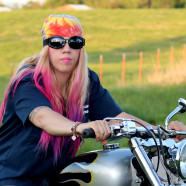





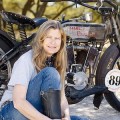
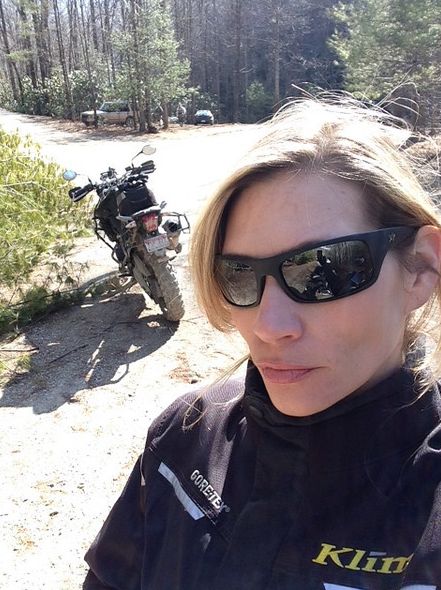
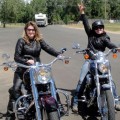

0 Comments
Trackbacks/Pingbacks